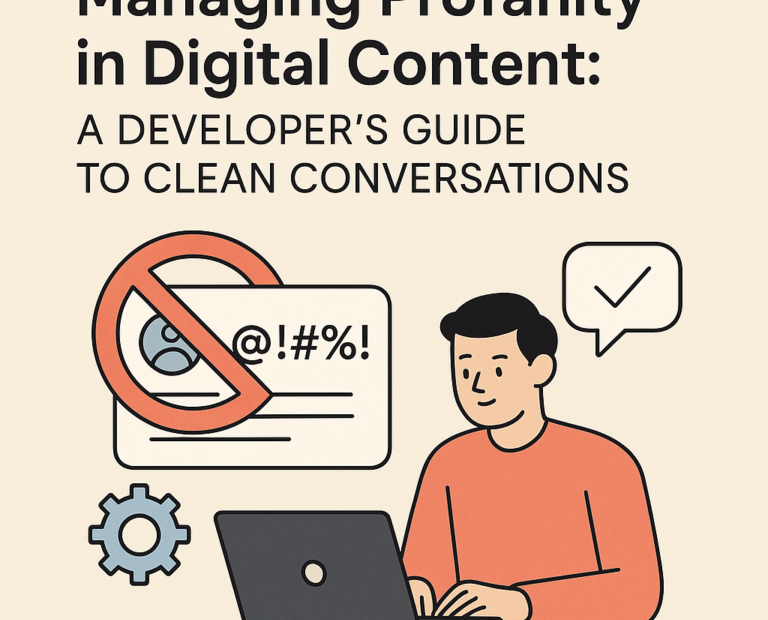In today’s hyper-connected world, user interaction powers everything—from comments on blogs to messages in web apps. But with great freedom comes the responsibility to filter out the noise. That’s where profanity management steps in: not to stifle speech, but to shape a respectful space.
As developers and content creators, we wear multiple hats: coder, moderator, curator of civil discourse. Here’s how to keep things clean without compromising the soul of your platform.
🧠 Why Profanity Filtering Matters
Profanity filters aren’t about being prudes—they’re about preserving trust.
- Protect your brand from negative perception.
- Foster community where users feel safe and heard.
- Comply with platform guidelines and age ratings (especially important in app stores and kid-friendly spaces).
Think of it like invisible plumbing—it should work quietly in the background but is essential for everything to function.
🔍 Approaches to Profanity Management
1. Basic Blacklists
The old-school method: maintain a list of banned words. Simple strpos or preg_match checks in Laravel middleware can do the trick. Add wildcard matching for more coverage.
$profanities = ['badword1', 'b@dword2'];
foreach ($profanities as $word) {
if (stripos($text, $word) !== false) {
// Take action
}
}⚠️ Watch out for false positives. Context matters—“Scunthorpe problem,” anyone?
2. Regex with Intelligence
Add pattern matching for flexible detection. Combine with tokenization to identify sentence structures rather than isolated words. For example:
preg_match('/\b(bad)?word(\d)?\b/i', $input);Still not perfect, but smarter than flat lists.
3. AI-Powered Moderation
Leverage ML tools like:
- Perspective API for toxicity scoring
- Azure Content Moderator for contextual classification
- OpenAI’s moderation API for nuanced text analysis
These can adapt over time and handle slang, spelling variants, and cultural context better.
🚀 Laravel Deep Dive: Filter in Action
Integrate profanity logic at validation or controller level. You can even batch-check using queued jobs if traffic is high.
public function sanitizeContent(string $text): bool
{
$blacklist = config('profanity.words'); // Fetch from config or DB
foreach ($blacklist as $badWord) {
if (stripos($text, $badWord) !== false) {
return true;
}
}
return false;
}🔄 Want to get fancy? Combine this with Laravel Pennant to toggle filtering per user role or region.
👥 More Than Code: Set Expectations
Let your users know the rules. A simple tooltip like “Comments are filtered for offensive language” sets the tone. And when content is flagged, send constructive feedback:
“Your comment was moderated because it may contain language that goes against our community guidelines.”
🧪 Final Thoughts: Filter the Hate, Keep the Heart
Language is rich and expressive—but sometimes, it crosses lines. As digital builders, you get to shape how people interact, collaborate, and debate. Let profanity management be less about policing and more about nurturing better conversations.
Fuel my creative spark with a virtual coffee! Your support keeps the ideas percolating—grab me a cup at Buy Me a Coffee and let’s keep the magic brewing!
